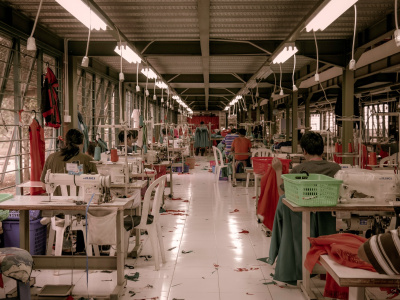
To circularity and beyond: A comprehensive EU strategy for textiles
In March this year, the European Commission launched its new circular economy action plan for a more sustainable and greener Europe. The plan prioritises seven sectors, including – to no one’s surprise – the textiles value chain, for which the Commission has proposed to develop a ‘comprehensive strategy’. It is a great opportunity for the EU to move away from the prevailing linear ‘take-make-dispose’ approaches to more circularity in textile value chains. And that is not a luxury if you consider that only 1% of all textiles globally are recycled into new textiles.
While the textile sector is one of the most polluting industries, it is also rife with human rights abuses. Just think of the Rana Plaza catastrophe in Bangladesh in 2013 or the fact that garment workers in Ethiopia on average receive a base salary of no more than $26 a month. The strategy therefore merits to go beyond circularity and environmental issues, to also encompass social dimensions.
In this spirit, over 60 civil society organisations joined forces and on 23 April launched their proposal for a European strategy for sustainable textile, garments, leather and footwear. It is a truly diverse coalition, involving fair trade organisations, Fashion Revolution, the European Environment Bureau and the Plastic Soup Foundation, to name just a few. Working for a think tank, it is not our role to sign up to such an advocacy document, but we have been involved in the consultative process as researchers.
It was inspiring to see organisations focusing on so many different areas – from working conditions and gender equality to waste management and environmental protection – come together and develop a proposal for a comprehensive strategy. Such collaboration is far from straightforward. Priorities, ways of working and expertise differ.
Also, as simple as it may seem, it can be challenging to find each other in the first place, as people operate in different fields. It was therefore all the more fascinating to see the coalition grow from the three initiators to a large and diverse group, and agree on proposals for EU measures to address both environmental and social dimensions in textile value chains.
A sneak preview of the textiles strategy
Although the textiles strategy will only be put in place in 2021, the European Commission’s circular economy action plan gives some indication of what it may look like. One of the measures is a new sustainable product framework that includes ecodesign requirements for textile products. This means that your next pair of jeans may be more recyclable and durable! The action plan also proposes to make textile producers contribute towards the recycling and treatment of their textile waste through extended producer responsibility schemes.
The action plan incorporates external dimensions, such as waste export restrictions and circular economy objectives in free trade agreements. However, a due diligence legislation covering the entire supply chain is not mentioned.
The proposal put forward by the civil society coalition calls for mandatory EU-wide human rights and environmental due diligence. This would allow for a more comprehensive approach to assessing the impact of Europe’s consumption and production on third countries. Even if due diligence legislation is not in the scope of the action plan, it could be an important component of a comprehensive EU strategy for textiles.
Going beyond circular
Over the years, a number of initiatives have been introduced in Europe in support of socially and environmentally sustainable value chains in general, as well as textiles in particular. This ranges from the different due diligence legislation in certain member states, to policies at the broader EU level, such as the EU Ecolabel. But what we really need is a more integrated EU-level approach.
The strategy may well be the golden opportunity to make sure existing policies, both environmental and social, work in harmony and have a greater combined effect, while introducing more ambitious measures. Policy coherence is fundamental to the Sustainable Development Goals, which are based on the idea that different aspects of development work in tandem and are influenced by multiple actors and policies. The five pillars of development, people, planet, prosperity, peace and partnership are intertwined and need to work together. Fragmented policies cannot address complex sustainability challenges.
Of course, political feasibility will also come into play. Decisionmakers may choose the path of a circular economy textiles strategy, if covering social dimensions seems a dead end politically. We’re all for pragmatism, but easier rides don’t necessarily bring you to the best destinations.
Forgive us this imagery when many of us, including ourselves, are in lockdown. We think of better times when lockdowns are no longer needed, and fair and sustainable textiles are the default. An EU strategy that truly merits the word ‘comprehensive’, tackling environmental and social dimensions through a smart mix of measures, can bring this default setting closer.
The views are those of the authors and not necessarily those of ECDPM.





